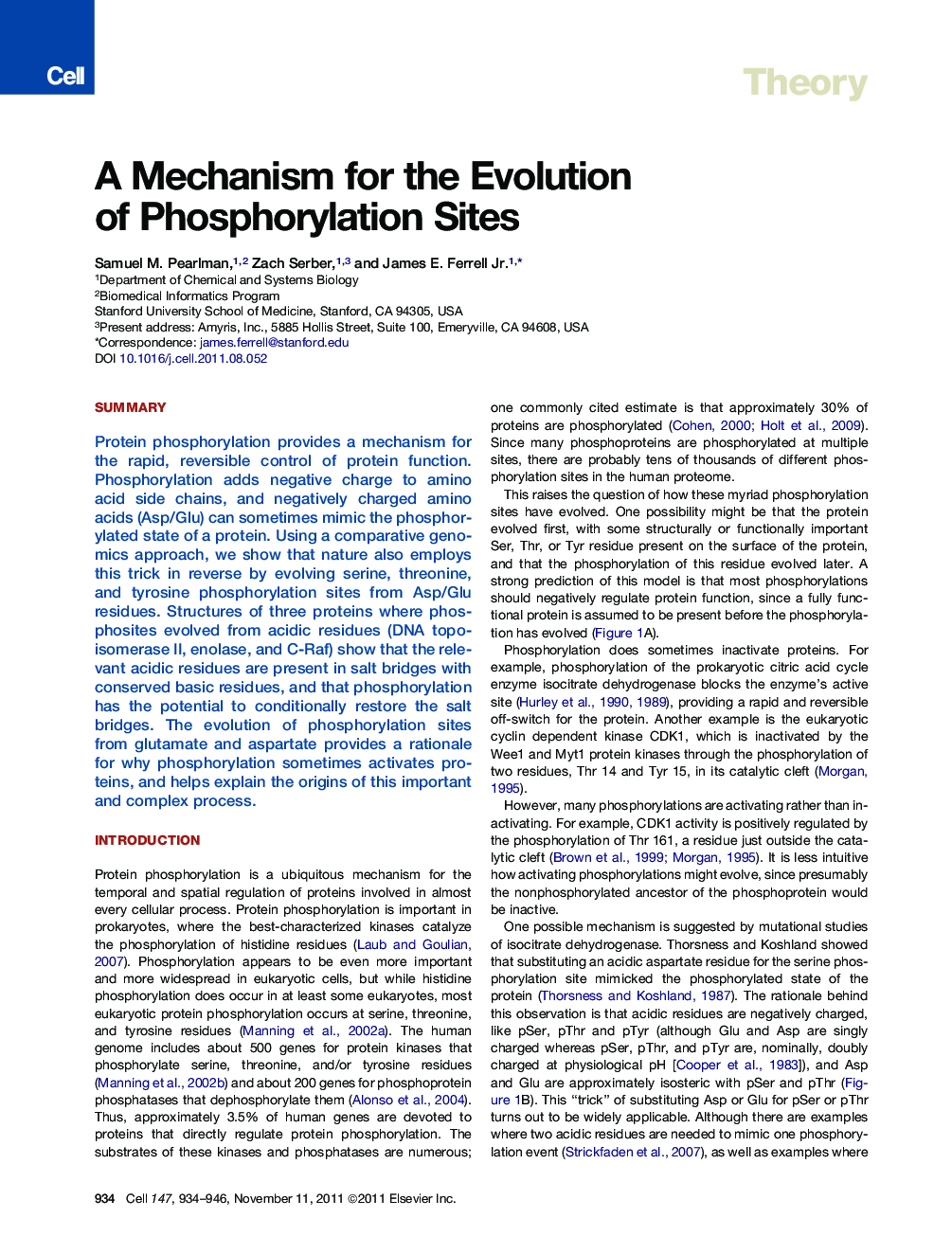| کد مقاله | کد نشریه | سال انتشار | مقاله انگلیسی | نسخه تمام متن |
|---|---|---|---|---|
| 2035733 | 1072214 | 2011 | 13 صفحه PDF | دانلود رایگان |

SummaryProtein phosphorylation provides a mechanism for the rapid, reversible control of protein function. Phosphorylation adds negative charge to amino acid side chains, and negatively charged amino acids (Asp/Glu) can sometimes mimic the phosphorylated state of a protein. Using a comparative genomics approach, we show that nature also employs this trick in reverse by evolving serine, threonine, and tyrosine phosphorylation sites from Asp/Glu residues. Structures of three proteins where phosphosites evolved from acidic residues (DNA topoisomerase II, enolase, and C-Raf) show that the relevant acidic residues are present in salt bridges with conserved basic residues, and that phosphorylation has the potential to conditionally restore the salt bridges. The evolution of phosphorylation sites from glutamate and aspartate provides a rationale for why phosphorylation sometimes activates proteins, and helps explain the origins of this important and complex process.
Graphical AbstractFigure optionsDownload high-quality image (185 K)Download as PowerPoint slideHighlights
► Some phosphorylation sites have evolved from acidic residues in primordial proteins
► The switch from D/E to S/T/Y sometimes happened at the prokaryotic/eukaryotic split
► The switch sometimes happened later in evolution
► Phosphorylation may restore salt bridges present in D/E-containing homologs
Journal: - Volume 147, Issue 4, 11 November 2011, Pages 934–946